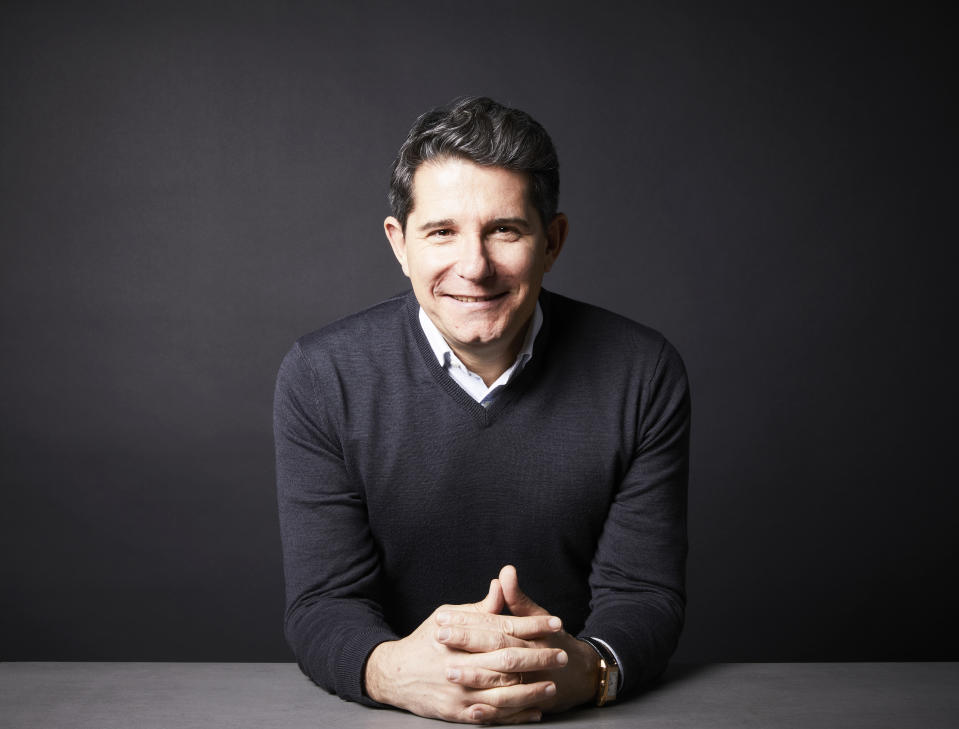Can Retail Right-Size its Inventory Mess? Experts Weigh In…

One of the biggest risk factors in retail right now is inventory. Over the past couple of years, demand has repeatedly reversed, leaving merchants with either merchandise deficits and missed sales or a glut of unsold goods. As omnichannel shopping patterns have picked up, having the right stock in the right place is crucial for capturing consumers’ dollars.
Sourcing Journal asked key industry executives to weigh in on the biggest challenges in inventory management, as well as the areas to focus on for potential improvements.
More from Sourcing Journal
Happy Returns Acquisitions Makes UPS 'Most Consumer-Friendly Logistics Provider'
45% of Retailers Use Repair and Resale to Wrangle Rising Returns

MICHAEL RELICH, Co-CEO, Pacsun
What should be the industry’s top lesson from 2022?
Plagued by the supply chain delays of 2022, the industry bought further out and deeper to mitigate risk. Unfortunately, the decline in consumer demand has left inventory levels extremely high and is negatively impacting margins.
Related to inventory management, what has been the best decision made or action taken by Pacsun in the last year?
Pacsun aggressively adjusted our inventories to match demand in the current environment. We started out with YOY increases in inventory but liquidated excess inventory and adjusted receipts to align our inventory position with demand. We are in a position to chase inventory if demand exceeds expectations.
Looking ahead at 2023, what solution has the most potential to improve retail operations?
With business increasingly becoming omnichannel with ship-from-store, buy-online-pickup-in-store, local delivery, etc., inventory accuracy is paramount to leverage inventory to the last piece, lower shrink, drive margins and provide excellent experience. RFID, which has been around for over a decade without significant adoption because of questionable ROIs, now has a quick return given the use cases that the world-class omnichannel experience requires. RFID is getting a second look by many retailers and adoption is increasing given the ability to significantly improve retail operations and profitability.

JP CHAUVET, CEO, Lightspeed
What is the number one mistake you see companies making when it comes to inventory management?
Ordering with their gut rather than making data-based decisions. If they don’t have a referenceable system of record, or they have a system of record but it is unreliable, they can find themselves in trouble.
Annual inventory counts or no inventory tracking means merchants risk making costly decisions when they order stock that they didn’t need and create dusty inventory they will need to discount to sell. Being on top of how much inventory you have and how quickly it’s actually selling will mean you order enough to never miss a sale, but not so much that you end up having your capital invested in stock that won’t move. Having a system of record which you can trust—because the inventory is up to date—will give you a better chance to make confident decisions using that system.
If a company doesn’t have the dollars to invest in technology for all areas of operation, what is the most urgent area of focus?
A trusted system of record is one of the most urgent areas of investment because it gives a true baseline reflection of what’s going on in your business. For retailers, that’s a POS and inventory management system which fundamentally tracks how much inventory you have and automatically decreases those counts when you sell. Merchants can potentially see a huge return by investing in an easy-to-use, cloud-based POS and system of record they can access from anywhere. And when you consider the issues today around labor cost and availability, these tools help you do more with less, freeing up time for business owners and their employees to focus on other aspects of their operation.
What has been Lightspeed’s biggest achievement this year?
One of Lightspeed’s greatest achievements this year has been the launch of our flagship products for retail—including e-commerce and B2B—and hospitality businesses, each with built-in payments integrations. We have taken the greatest features of the products from our acquisitions and amalgamated them under these flagship offerings. We are now prepared better than ever to help our merchants around the world provide an exceptional omnichannel experience for their customers.

NIKKI BAIRD, Vice President of Strategy, Aptos
What is the number one mistake you see companies making when it comes to inventory management?
They work at too high of a level of aggregation. For example, they may look at inventory levels across “toys” or even at a class level of “action figures” or “Power Rangers.” They could look at Power Rangers and think they’re good, but the aggregate hides that they’re completely out of everything related to the Pink Ranger.
They need to look at inventory at a much more granular level. But that takes either more people or more automation and intelligence, and an investment and commitment to make that happen. And sometimes, other than walking the floor and seeing where they’re in stock and out of stock, they may not even be aware they have a problem.
What has been Aptos’ biggest achievement this year?
Helping our customers keep up with rampant growth in their omnichannel business. E-commerce sales flattened out as consumers returned to stores, but omnichannel sales—whether BOPIS, ship from store, or in-store save the sale—just continued to grow like it was 2020. It meant having to bring a combination of our software and technology expertise to bear, but also serve more in a consulting role to help our customers adjust their strategies and how those strategies were implemented in our OMS solution to help them keep up.
What is the main challenge to better adoption of retail tech by the fashion industry?
Fashion companies are brand and product people at heart. Probably the biggest challenge is getting a whole company of those people to care about technology. For a lot of other categories, companies overall recognize that technology is strategic to the business; with e-commerce, you can’t sell anything without tech. But in fashion, fit slowed online sales—and drove a lot of unexpected costs with returns—so it has taken longer for non-tech people to understand that they don’t have a future without tech as an enabler, rather than a cost to be contained.

TASHA REASOR, Senior Vice President of Marketing, Loop
What is the number one mistake you see companies making when it comes to inventory management?
Not leveraging a third-party logistics solution (3PL). Rather than manually tracking down items for each order, brands who use world-class 3PLs like Whiplash will enjoy the benefits of seamless order fulfillment. Most 3PLs can handle physical logistics like warehousing, inventory management and shipping, which alleviates a ton of work for brands. Leveraging a 3PL means less time and money is spent on manual tasks that can otherwise be outsourced and automated.
Brands can easily implement 3PLs into their tech stack, and they’ll have benefits like streamlined processes, cost savings and scalability. That’s why Loop offers many of the top 3PL integrations, to ensure brands can easily implement these benefits across their entire customer journey including returns.
What has been Loop’s biggest achievement this year?
More than doubling the impact we’ve had on our brands. This time last year, we’d processed 8 million annual returns. Today, that number is closer to 20 million. And we’ve gone from $310 million in retained revenue to over $900 million—a huge benefit for brands trying to improve their retention rates and repeat sales. This is a clear indication that even during an economic downturn, Loop continues to empower the world’s most-loved brands like Allbirds to reduce costs, increase revenue and help deliver on their ideal post-purchase experiences.
Looking ahead at 2023, what solution has the most potential to improve retail operations?
We’re starting to see a shift of digitally native brands like LSKD and Hush expand to physical stores. Shifting from e-commerce to true commerce is no easy task. There’s no one-size-fits-all playbook, and brands can’t simply take their existing digital experience and expect it to work as a brick-and-mortar strategy—especially knowing that traditional in-store experience expectations have also changed. This means brands have to reimagine how they think about the in-store experience from a variety of angles, including checkout processes, logistics and returns.
Long gone are the days where brands can open a physical store, throw up a bunch of racks, and plaster discount sales graphics across the store. The bar for in-store shopping has been raised. Customers are looking for more personalized, curated experiences that reflect the brand.
This will require intentional consolidations and efficiencies across a wide range of processes, which will only be possible by creating thoughtful, strategic initiatives that consider the bottom line and the customer experience equally. And selecting the right partners to see these visions come to life, too.

SONIA PERES, Global Senior Director Industry Strategies, Blue Yonder
What should be the industry’s biggest lesson from 2022?
Set up an agile supply chain that will enable you to navigate disruptions. On-demand sourcing led by artificial intelligence and machine learning forecasting capabilities will become critical to ensure you have the right amount of the right product in the right locations when demand shifts based on consumer behavior.
A combination of nearshore and offshore sourcing is essential to fulfill demand when the supply chain is faced with disruptions. Real-time tracking and tracing is key to giving you that flexibility of knowing when you will need to shift fulfillment to nearshore, as the cost of not having the product available when the customer demands it far outweighs any reduced costs or additional savings from sourcing offshore.
What is the main challenge to better adoption of retail tech by the fashion industry?
Fashion, being an artistic industry, has traditionally been led by trends launched by trendsetters and the rest followed. The Covid pandemic brought an abrupt end to that with the fashion industry being forced to adapt to swift customer behavior shifts, which radically accelerated digital transformation, and it will not stop just at how the customer interacts with the fashion retailer. To remain relevant and maintain market share, the fashion industry will have to critically look at its end-to-end operations from designing and producing products to its supply chain, managing inventory and prices.
The era of blending art with science is upon the fashion industry, and there are three challenges to better adoption: focusing on a balance of agility and efficiency; introducing AI/ML and trusting science to predict the future and not relying on “gut artistic feeling”; and fashion retailers should spend more time and focus on the state of their data quality and attributes.
What has been Blue Yonder’s biggest achievement this year?
The many implementations of our best-in-class omnichannel order management micros services including inventory visibility, commits and order services. Customer-centric experiences require more intelligence than ever before to engage customers and deliver the right product, through the right channel, with the speed and convenience that consumers expect. Blue Yonder transforms order management (OMS) with an augmentative, microservices-based approach, which delivers the rapid time-to-market, scale and performance businesses need from inventory availability, order orchestration and fulfillment.

DAVID SOBIE, Vice President, Happy Returns
What should be the industry’s top lesson from 2022?
Consumers have options when it comes to where, when and how they can shop. They are prioritizing brands whose values align with their own, ones with a simple and intuitive e-commerce experience, and increasingly placing a focus on the post-purchase and returns part of the shopping journey.
Consumers prefer box-free, in-person returns as their number one method when returning online purchases. In simple terms, consumers will not tolerate the hassle and wait for returns by mail, which had been the default option for online shoppers.
What has been Happy Returns biggest achievement this year?
Our announcement in March that our return portal software is available for free to any merchant who uses PayPal checkout.
We now have over 500 retailers who use our software and reverse logistics services and have grown our network to over 5,000 locations, where shoppers can drop off box-free, in-person for an immediate refund or exchange.
Looking ahead at 2023, what has the most potential to improve retail operations?
Improving returns has the most potential to improve retail operations next year. Improving the shopper experience has the potential to increase customer lifetime values and improve retention. Enabling returns to a third-party network has the potential to reduce return costs by up to 40 percent versus returns by mail and improve sustainability by reducing shipments and cardboard waste through aggregated shipping in reusable totes rather than cardboard boxes.

MATT GUISTE, Global Retail Vertical Marketing Lead, Zebra Technologies
What is the number one mistake you see companies making when it comes to inventory management?
For every new capability that retailers consider, there is one fundamental initial question: build, buy or partner? For years, there were compelling arguments for building in-house, and this is often the first impulse for retailer IT departments. It’s believed that the specificity of the needs and the flexibility and ownership for this option provides an offset for most downsides.
However, the calculus has changed. To stay competitive now, nearly all retailer technology systems need to connect with common data sources and protocols, be scalable from one part of the enterprise to the whole organization and be suffused with artificial intelligence (AI) and machine learning from top to bottom. And, of course, have orders of magnitude higher levels of up-time, performance and security than even just a few years ago. This tension is highlighted specifically in inventory, where for most companies a patchwork of disparate hardware and software solutions give batched and incomplete views for most products most of the time.
If a company doesn’t have the dollars to invest in technology for all areas of operation, what is the most urgent area of focus?
According to Zebra’s recently issued 15th Annual Global Shopper Study, the top motivating factors for retail consumers in both online and in-store channels are product availability and product selection. In short, having a product that a consumer wants is the most fundamental reason for a retailer to exist. But it’s hard to upgrade everything all at once, especially with recession fears and potentially limited investment dollars.
Retailers should invest in systems that augment an existing capability. A great example is Zebra’s Antuit.ai, a long-term demand-sensing product that brings AI and machine learning to existing retailer forecasting tools, helping make complex and volatile projects more accurate with no need to replace the existing demand product.
Filling retail jobs remains challenging today. However, the single biggest thing a retailer can do to improve efficiency and retail associate satisfaction is to lean in heavily to human-centric automation. This can be as small as automating task management to make it clear what the next best action is, or as big as robotics to help associates restock shelves after hours.

CHARLES GRIFFITH, Chief Technology Officer, Quiet Platforms
What should be the industry’s top lesson from 2022?
Inventory management and supply chain visibility are must-haves. In 2022, we saw a continuation of supply chain challenges, and for the retail industry, the lack of visibility topped the list. Retailers were impacted by poor visibility and forecasting of inbound inventory early in the year, leading to shifts in call dates and heavier inventory purchases. As the year progressed, supply chains settled into patterns that were more traditional—and too many goods arrived too early, leaving retailers with more supply than demand. For many, that led to heavier promotional activity to clear the excess. In short, retailers with greater visibility and more dynamic supply chains were the winners this year.
What has been Quiet Platforms’ biggest achievement this year?
Quiet Platforms has provided the flexibility, technology and infrastructure to help many customers effectively navigate a very disrupted supply chain environment and deliver shipments to customers faster and with lower cost. In 2022, Quiet Platforms also launched two new technology services.
The Quiet Visibility Platform solution provides end-to-end visibility for inbound and outbound movements across the platform, enabling retailers to make better decisions earlier. Quiet Inventory Apps is a suite of tools that enable retailers to monitor and automate key inventory placement and movement activities. The solution addresses geographic product assortment and inventory quantities across the network, offering a dynamic view of inventory health across locations and ensuring inventory gets to the right place at the right time.
Looking ahead at 2023, what technology has the most potential to improve retail operations?
Serving an evolving consumer requires more advanced supply chain capabilities that are packaged for ease of use. Consumer preferences are constantly evolving. For example, demand for day-definite home delivery is increasing even as shoppers also show renewed interest in shopping in-store. That means retailers must solve for the complexity of a more dynamic environment that leads to higher costs and more cumbersome processes. Quiet Platforms’ focus in 2023 will be taking on this challenge and providing the tools retailers and brands need to place inventory appropriately, move it at low cost, and respond to consumer demand, wherever it exists, across retail channels and geographies. By leveraging machine learning, Quiet Platforms will help accelerate and orchestrate decision-making across the network while providing retailers with simplified operational and reporting interfaces to track and drive their supply chain performance.

JOHANNA SMÅROS, Co-Founder, Relex Solutions
What should be the industry’s top lesson from 2022?
Retailers and consumer goods brands need to leverage data and technology to drive agility. The impact of extreme weather events, geopolitical tension and macroeconomic development are impossible to predict, which means that companies need to plan for different scenarios and be able to react effectively to changes in the market.
What has been Relex’s biggest achievement this year?
We are proud to have been instrumental in helping our clients navigate supply shortages, capacity constraints, rising costs and changes in demand to maximize consumer satisfaction at the lowest operative cost. This has resulted in best-in-class customer retention and customer satisfaction, in addition to 40 new clients choosing Relex despite the turbulent business environment.
Looking ahead at 2023, what technology has the most potential to improve retail operations?
Instead of looking for one silver bullet technology, retailers need to ensure that their planning and execution are unified across merchandising, supply chain planning and operations. This is imperative to drive efficiency and adaptability in a constantly changing market.

This article appeared in SJ’s Inventory Report. To download the full report, click here.

